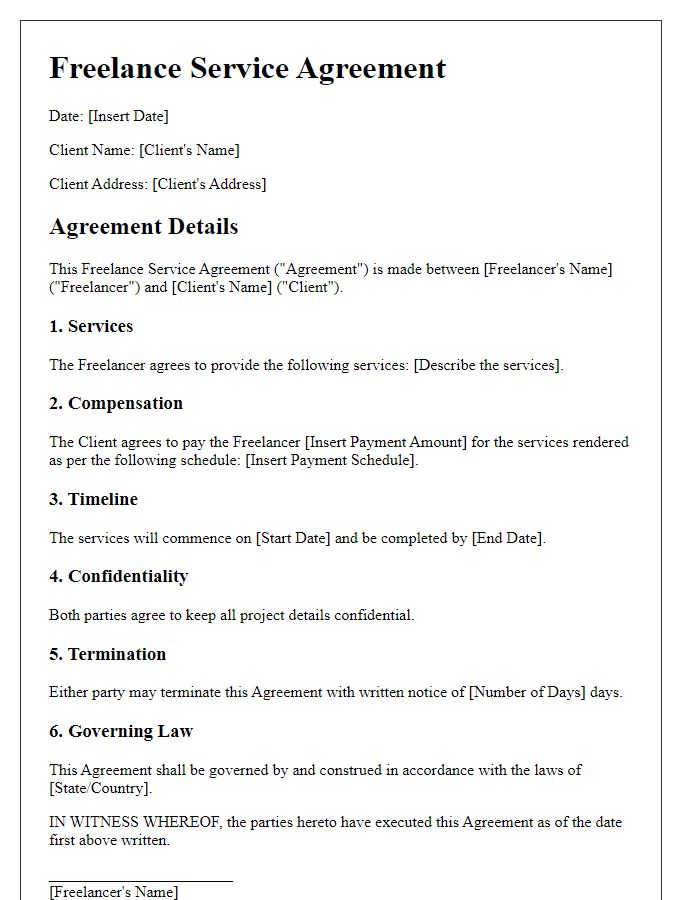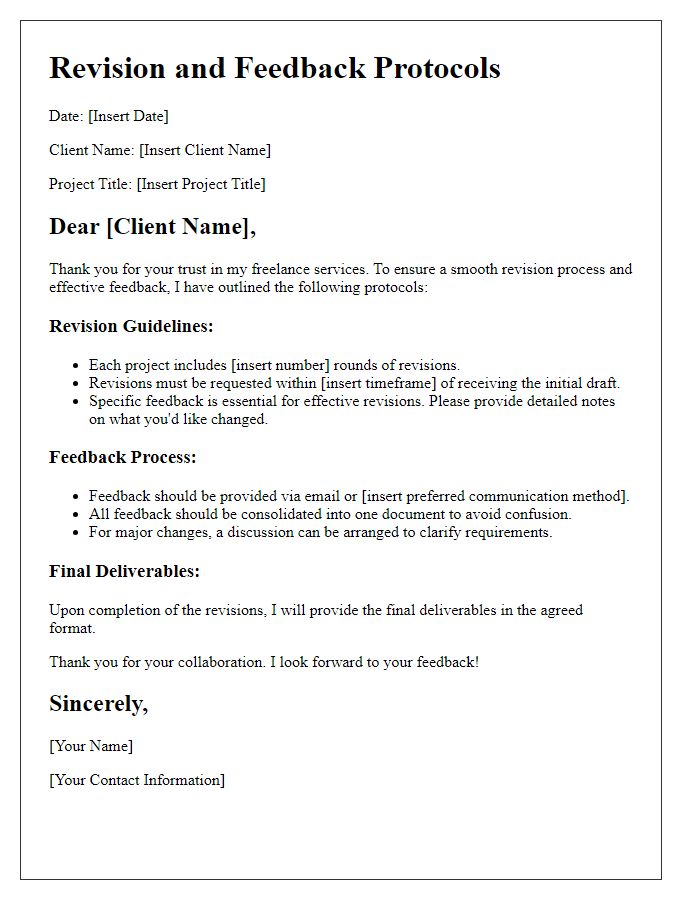Are you a freelancer looking to set clear expectations with your clients? Crafting a well-structured letter outlining your service terms can help establish a professional relationship from the start. A solid letter not only communicates your offerings but also protects your interests and fosters transparency. Ready to learn more about creating the perfect freelance service terms letter?

Scope of Work
The Scope of Work (SOW) outlines the specific services to be delivered by a freelance contractor, ensuring clarity and mutual understanding between the freelancer and the client. This section includes detailed descriptions of tasks, deliverables, and timelines. For example, web design services might encompass creating a responsive website layout, optimizing images, and ensuring compatibility across different browsers within a 4-week timeframe. Additionally, graphic design might involve producing five unique social media graphics, adhering to brand guidelines, and providing revisions based on client feedback. Clear definitions of project milestones, like initial concepts due by the end of week one and final delivery at the end of week four, help both parties maintain progress and align expectations. Furthermore, inclusion of billing rates, payment schedules, and terms for additional services beyond the agreed SOW safeguards against misunderstandings and fosters a professional working relationship.
Payment Terms
Freelance service agreements typically outline payment terms clearly to ensure transparency. Standard payment structures include upfront deposits ranging from 20% to 50% of the total project cost before work begins, ensuring commitment from clients. Payment milestones based on project phases can align disbursement with deliverables, promoting ongoing engagement and satisfaction. Invoicing practices usually occur bi-weekly or upon completion of specific project segments, simplifying financial tracking. Late payment penalties, often around 1.5% monthly, can motivate prompt payment while safeguarding the freelancer's time and effort. Accepted payment methods typically include digital transfers via PayPal, bank transfers, or credit card processors for ease and security in transactions.
Confidentiality
Freelance service agreements often include confidentiality clauses to protect sensitive information exchanged between the client and the freelancer. These clauses typically define the type of information considered confidential, which may include trade secrets, client lists, financial data, and project-related details. For example, a freelancer working on a marketing campaign for a technology startup must safeguard proprietary strategies and product development plans discussed during the project. Breaches of confidentiality can lead to legal repercussions, potentially resulting in damages or injunctions. Clear parameters for the duration of confidentiality obligations are essential, often extending beyond the period of engagement, ensuring long-term protection of the client's interests.
Termination Clause
A termination clause outlines the conditions under which a freelance service agreement can be ended. Common scenarios for termination include non-payment, failure to deliver agreed-upon services, or breach of contract. Notice periods may vary, typically ranging from seven to thirty days, allowing both parties to prepare for the conclusion of services. It is essential to specify any obligations that remain after termination, such as confidentiality agreements or obligations to return property. A clear termination clause protects both the freelancer and the client, ensuring a structured and fair process for ending the professional relationship.
Intellectual Property Rights
Freelance service agreements often include terms related to Intellectual Property Rights (IPR). These terms outline ownership and usage rights of creative works created during the project. For instance, in a graphic design project, the designer may retain copyright while granting the client a license for use. This stipulation ensures that the designer can showcase their work in portfolios while the client benefits from exclusive rights for a specific duration or purpose. Key important terms include "rights transfer," specifying when ownership transfers to the client, "attribution," highlighting whether the creator must be credited, and "moral rights," which protect the creator's personal connection to the work. Understanding these terms is essential for both parties to avoid legal disputes and clarify usage expectations.
Letter Template For Freelance Service Terms Samples
Letter template of freelance confidentiality and non-disclosure policies

Letter template of freelance ownership of work and intellectual property












Comments